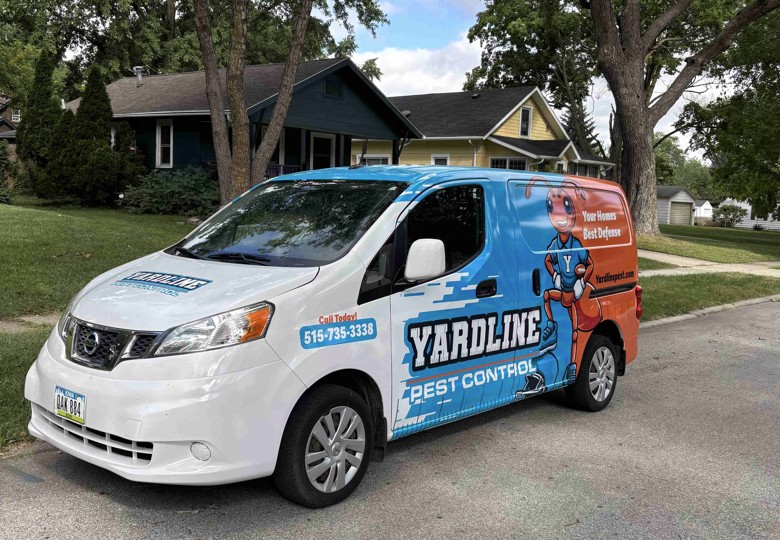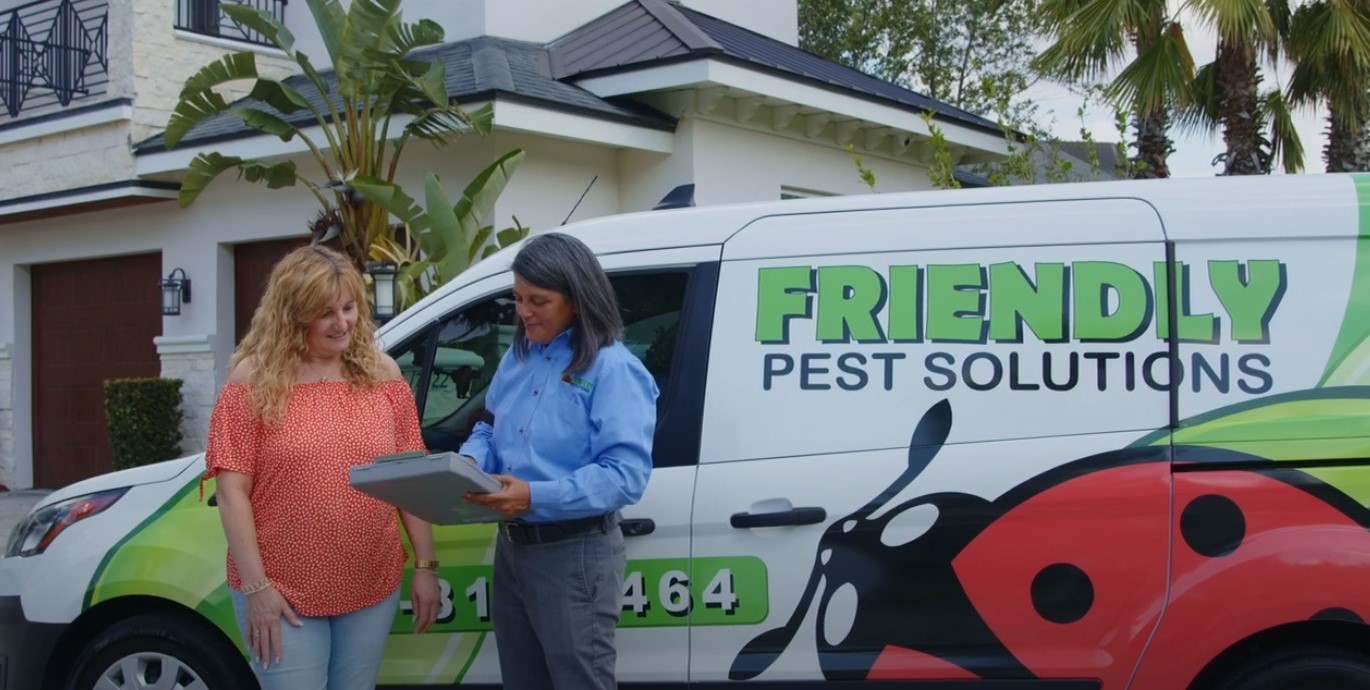How to Choose the Right Pest Control Business Model (Get Maximum Growth)

The right pest control business model attracts customers and drives revenue.
Choosing a model based on your service offerings, customer demographics, and business goals is essential. Do you want to scale quickly? Target clients in a particular industry? The answers to these questions help you identify the best model for your pest control service.
Successful pest control businesses often combine business models to build a solid customer base and generate the most profit.
This article explores the pros and cons of several pest control business models and provides tips on selecting the right strategy to drive growth.
8 Types of Pest Control Business Models to Consider
If you’re starting a new business or modifying your business plan, evaluate the benefits and downsides of business model options. Pest control business owners use multiple models to broaden their client base and increase cash flow.
1. Traditional Service-Based Model
A traditional service-based model charges commercial and residential pest control customers per service visit.
For example, a pest control company charges between $250 and $600 for a single visit. A one-time visit includes a pest inspection and treatment application. Customers schedule and pay for each visit if a pest infestation requires a follow-up appointment.
Since this model bases pricing on a one-time service fee, it simplifies pricing by eliminating complicated sales strategies and varying costs of subscription plans.
On the other hand, this model doesn’t provide convenience for customers who wish to pay a quarterly or annual fee for ongoing pest management services. It also makes it more difficult to retain customers for recurring services.
Pros | Cons |
Profitable for individual services Simple pricing structure Straightforward scheduling | Inadequate for customer retention Lack of customer convenience |
2. Specialized Niche Model
A niche model provides services for specific types of pests or specializes in pest control for a particular market. This model works well for businesses with unique expertise.
A niche model focuses on:
Specific pests, such as rodent or termite control.
Specialized pest control methods, including artificial intelligence pest detection, integrated pest management, or eco-friendly pest control.
Exclusive industries, such as restaurants, hotels, or medical facilities.
To develop a niche model, pest control operators conduct market research to understand customer demand and identify a target market. Accurate research determines the profitability of this model.
Companies profit from untapped revenue sources if few local businesses offer these services. In the event of inadequate market demand, businesses can’t generate enough revenue to sustain operations.
Pros | Cons |
Capitalize on experience or specialized technology Reduced competition Establishes a loyal customer base | Requires market demand Involves specialized skills |
3. Franchise Model
In a franchise model, business owners pay a fee to operate under an established brand. This is an attractive option because they benefit from a nationally known name, proven operational procedures, and a pest control marketing plan.
Entrepreneurs interested in buying a franchise first need to research franchise opportunities.
Key considerations include:
Franchise reputation and performance
How the brand fits with your business objectives
Financial requirements
Initial costs, franchise fees, and ongoing royalty fees
Training and support resources
Read the Franchise Disclosure Document to learn in-depth details about the company before investing in a franchise.
A franchise model allows business owners to hit the ground running with a developed business model, operational training, and support. Downsides include hefty startup costs, franchise fees, and royalty payments, depending on the franchise.
Pros | Cons |
Brand recognition Established business process Potential to scale quickly | High costs and fees Franchise restrictions |
4. Subscription Service Model
Commercial and residential customers pay a monthly, quarterly, or annual fee for pest control services with a subscription service model.
Customers appreciate service agreements or contracts because they pay once for ongoing services. Regular inspections and proactive treatments keep pests at bay and provide customers peace of mind.
Examples of pest control packages include:
Annual termite plans
Bundled services, such as termite and pest control, pest and mosquito control, or termite, pest, and mosquito control
Tiered packages, such as essential, plus, and premium
Plans include a set number of treatments within a specific timeframe. Businesses offer service guarantees and retreat between visits if pests appear. Plans include discounts to add value and assist in upselling.
This model requires businesses to evaluate costs and pricing so services remain profitable.
Pros | Cons |
Flexible payment options Ability to upsell Retains more customers | Requires price adjustments for profitability Customers notice price changes |
5. Partnership Model
A partnership model collaborates with other businesses in related industries to increase sales.
A pest control business partnering with a lawn care or cleaning company provides bundled services to a customer. Customers save time and money by scheduling and paying for services simultaneously.
A partnership model also uses a professional network to acquire new customers.
Consider partnering with business owners in relevant industries, such as:
Real estate
Property management
Janitorial
Hospitality
This strategy widens a company’s market and increases sales and revenue. To work effectively, businesses need to demonstrate the value of bundled services to customers. It also requires in-person networking to build long-lasting professional relationships.
Pros | Cons |
Increases sales Generates more customers Connect with various industries | Reliant on effective networking Dependent on market demand |
6. Government Contracts and Bids Model
In this model, pest control businesses focus on winning federal, state, or local government contracts and bids.
This includes service to:
Government offices
Courthouses
Post offices
Public schools
Libraries
Military bases
Parks
Pest control businesses profit from government contracts through a steady source of revenue.
This model also comes with challenges, as it requires an understanding of bid specifications and the bidding process. Pest control operators need to know the true cost of services to create a competitive yet profitable bid.
Pros | Cons |
Profitable markets Long-term contracts Steady source of revenue | Time-consuming Highly competitive |
7. Consultation and Education Model
Businesses with a consultation model educate clients about pest prevention and management strategies.
This model works well for commercial clients seeking to protect their businesses, such as proper hotel sanitation to stop bed bug infestations. Pest control businesses provide consultations and training sessions, workshops, and educational materials to teach clients and their employees how to avoid infestations.
When used in combination with extermination services, this model offers a comprehensive pest management approach.
Pros | Cons |
Ability to generate more profit Specialization gives a competitive advantage Comprehensive approach | Requires specific training Limited market |
8. Product Sales Model
Some customers prefer to handle minor pest problems themselves and seek specific pest control products.
A product sales model sells homeowners traps, baits, repellents, and monitoring systems for a DIY approach. Businesses advise customers about the most effective solutions to resolve specific pest issues. If the DIY approach fails, customers know who to call for professional help.
It’s important to note federal pest control regulations strictly control the distribution, sale, and use of pesticides. Federal law also requires certification of applicators using restricted-use pesticides (RUPs), which the general public cannot purchase or use.
Pros | Cons |
Boosts revenue Provides customers options Increases leads | Not all customers seek DIY Consumer products aren’t as effective |
How to Choose the Best Business Model for You
The right business model fits with your unique services, expertise, customer needs, and business objectives.
Follow these steps to determine the right model:
Perform a market analysis: Analyze the demand for pest control services in your area. Understand the needs of potential customers to develop attractive pest control services.
Assess the competitive landscape: Research competitor services, prices, and marketing strategies. This includes reviewing a competitor’s website, blog, and social media platforms. This data helps you develop competitive packages, capitalize on service voids, and create compelling marketing messages.
Consider financial resources: Certain business models, such as the franchise model, require significant startup costs. Consider your initial costs, ongoing expenses, and methods of generating a steady income.
Analyze operational capabilities: The size of your business and years of experience determine which services to offer. If you or your employees possess industry-specific experience, you can provide niche services or educational training to clients.
Determine pricing strategies: Decide how you want to charge clients for services. The most profitable pricing strategies provide customers with options. Regardless of your business model, periodically re-evaluate pricing to adjust for labor and supply increases.
Evaluate growth potential: Consider the long-term growth potential of the business model. Will it sustain the business? How will you diversify to maintain growth? Create financial projections to measure business goals.
Set Your Pest Control Business Up for Success
Selecting the right pest control business model is a crucial decision. But it doesn’t guarantee success.
FieldRoutes® pest control software helps pest control operators optimize business operations, improve efficiency, and increase profitability.
The all-in-one solution:
Simplifies scheduling
Streamlines estimating
Automates invoicing
Enhances customer communication
Industry-specific reporting features give operators real-time performance insight to make better decisions and scale business effectively.
Ready to set your business up for success? Schedule a demo today!
Frequently Asked Questions (FAQs)
Find the answers to commonly asked questions about pest control businesses.
Q1. How Profitable Is Pest Control?
The average profit margin for pest control companies in the U.S. ranges from 10 to 20%. The amount of profit a business makes depends on the size of the business, services, location, and market factors.
Business owners who deliver quality service, implement efficient processes, and focus on customer satisfaction will attract new customers, generate more referrals, and increase profit.
Q2. Are Pest Control Franchises Profitable?
Pest control franchises are a profitable venture. On average, pest control owners earn $45,243 annually.
Those interested in starting their own pest control business or buying a franchise should research business performance. Understanding financial requirements, startup costs, franchise fees, and ongoing royalty fees is important to determining profitability.
Q3. How Do I Write a Business Plan for Pest Control?
Use a template or follow these steps to write a business plan for your small business:
Executive summary: Summarize your business plan.
Company overview: Detail business owners, type of business entity, company vision, and number of employees.
Services: Highlight pest control services and plans.
Pricing: Set your pricing structure.
Customer and competitor analysis: Analyze customer demand and how your services set you apart from competitors.
Operations plan: Explain your management structure and operational processes.
Financial plan: Provide a financial overview and project future business revenue.





